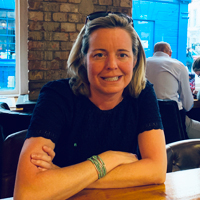Best Neighborhoods for Families in Buenos Aires
Summary: If you're moving to Buenos Aires with kids, here are some of the best neighborhoods in Buenos Aires for families.
Buenos Aires, the vibrant capital of Argentina, is a city that combines European elegance with Latin passion. It's a place where expats and digital nomads can find bustling markets, serene parks, and a rich cultural scene. For families looking to settle in this dynamic metropolis, choosing the right barrio (neighborhood) is crucial. Each offers a unique blend of amenities, community, and lifestyle. Here are some of the best neighborhoods in Buenos Aires that cater to the needs of families, providing a balance of tranquility, accessibility, and local charm.
Belgrano
Belgrano is a residential neighborhood known for its leafy streets, spacious parks, and family-friendly atmosphere. It's a popular choice for expat families due to its excellent schools and recreational facilities. Families can enjoy weekends at Barrancas de Belgrano, a park that often hosts artisan fairs and has playgrounds for children. The neighborhood is also home to the famous Chinatown, offering cultural experiences and diverse dining options.
Location: North of Buenos Aires, near the Rio de la Plata riverbank
Real Estate: Rental prices for a 2-bedroom apartment average around $500-$700 per month, while a 3-bedroom can range from $700-$1000. Purchase prices vary widely depending on the property's age and amenities.
International Schools: Belgrano hosts several bilingual schools, including Colegio Pestalozzi and Buenos Aires International Christian Academy, offering education from elementary to high school levels with international curricula.
Where to Eat: Families can enjoy a variety of cuisines, from traditional Argentine parrillas to Asian fusion restaurants like Green Bamboo.
Interesting History: The neighborhood was named after Manuel Belgrano, an Argentine economist and military leader who created the national flag. His legacy can be explored at the Museo Historico Sarmiento.
Parks: Parque General Paz is a popular spot for sports and picnics, while the smaller Plaza Manuel Belgrano is known for its weekend crafts fair.
Palermo
Palermo is one of the largest neighborhoods in Buenos Aires and is divided into several sub-areas, including Palermo Chico and Palermo Viejo. It's a trendy and vibrant area with plenty of green spaces like the Bosques de Palermo, which is perfect for family outings, featuring lakes, rose gardens, and playgrounds. The Buenos Aires Zoo and the Planetario are also located here, providing educational entertainment for kids.
Location: Northeast of the city center, encompassing various sub-neighborhoods
Real Estate: A 2-bedroom rental in Palermo can range from $600-$900, while a 3-bedroom might cost $900-$1200. Buying property follows a similar premium trend.
International Schools: Palermo is home to several international schools, such as the Palermo International School, offering bilingual education with an emphasis on global citizenship.
Where to Eat: The neighborhood is famous for its culinary scene, with family-friendly spots like La Cabrera offering renowned Argentine steaks.
Interesting History: Palermo is named after an Italian city, reflecting the influence of Italian immigrants in the area. Historical sites include the Palacio Errazuriz, now the National Museum of Decorative Arts.
Parks: The Tres de Febrero Park, also known as Bosques de Palermo, is the most popular park in the area, attracting families for its scenic beauty and recreational activities.
Recoleta
Recoleta is an upscale neighborhood with a European flair, known for its cultural landmarks and refined architecture. It's a great area for families who appreciate a quieter environment with access to high-quality amenities. The Recoleta Cultural Center and the National Fine Arts Museum offer regular family-friendly events and workshops. Additionally, the neighborhood's namesake cemetery is a historical attraction, housing the graves of notable Argentine figures.
Location: In the heart of Buenos Aires, adjacent to the downtown area
Real Estate: Recoleta is on the higher end, with 2-bedroom rentals averaging $700-$1000 and 3-bedrooms at $1000-$1500. Properties for purchase are among the most expensive in the city.
International Schools: While Recoleta doesn't have a large number of international schools, nearby neighborhoods offer options such as the Buenos Aires International School.
Where to Eat: Families can enjoy a variety of dining experiences, from upscale restaurants like Fervor to casual cafes like La Biela, a historic spot frequented by literary figures.
Interesting History: Recoleta Cemetery is not only a resting place for the elite but also a testament to the country's history, with ornate mausoleums and the tomb of Eva Peron.
Parks: Plaza Francia is a well-known park in Recoleta, hosting artisan fairs and live performances, making it a weekend favorite for local families.
Caballito
Caballito is a middle-class residential neighborhood that offers a more authentic Buenos Aires experience. It's a great option for families seeking a community-oriented lifestyle. The area boasts the Parque Rivadavia, which has a children's playground, a carousel, and a book fair. The neighborhood is also home to the historic Tramway Museum, where families can ride vintage trams on the weekends.
Location: Geographically centered in Buenos Aires, providing easy access to other parts of the city
Real Estate: Rental prices for a 2-bedroom apartment average $400-$600, with 3-bedroom units ranging from $600-$800. Purchase prices are more affordable compared to upscale neighborhoods.
International Schools: Caballito has several bilingual schools, such as the Liceo Jean Mermoz, offering a French-Argentine curriculum.
Where to Eat: Local eateries like Lo de Coki serve up classic Argentine dishes, perfect for a family meal.
Interesting History: The neighborhood's name, meaning "little horse," comes from a weather vane shaped like a horse that was placed atop a pulperia (old-time bar) in the 19th century.
Parks: Parque Rivadavia is the neighborhood's central park, a hub for family activities and community gatherings.
Nunez
Nunez is a tranquil residential neighborhood that's ideal for families looking for a peaceful retreat within the city. It offers a mix of modern high-rises and traditional homes. The area is known for its sports clubs, such as the River Plate Stadium, which provides various athletic programs for children and adults. The proximity to the Rio de la Plata also allows for picturesque walks along the riverbank.
Location: Northern tip of Buenos Aires, bordered by the Rio de la Plata
Real Estate: Rental prices for a 2-bedroom apartment are around $500-$700, while a 3-bedroom can cost $700-$900. Buying a home in Nunez is more affordable than in the city's central areas.
International Schools: While Nunez doesn't have a high concentration of international schools, nearby neighborhoods offer options such as Washington School with bilingual education.
Where to Eat: Families can enjoy riverside dining at restaurants like Tierra Negra, offering organic and health-conscious meals.
Interesting History: The neighborhood is named after Florencio Nunez, who owned much of the land in the area during the late 1800s.
Parks: Parque Saavedra is a popular green space for families, featuring playgrounds, a pond, and sports facilities.
San Telmo
San Telmo is one of the oldest neighborhoods in Buenos Aires, known for its colonial buildings and cobblestone streets. It's a cultural hub with a bohemian atmosphere, appealing to families who enjoy art and history. The weekly San Telmo Market is a family favorite, offering antiques, crafts, and street performances. The neighborhood also has several small plazas with playgrounds and is close to the modern Puerto Madero area, which has wide pedestrian zones perfect for biking and strolling.
Location: South of the city center, close to the financial district
Real Estate: Rental prices for a 2-bedroom apartment average $400-$600, while a 3-bedroom ranges from $600-$800. Property purchase prices are moderate but can vary greatly depending on the building's historical value.
International Schools: San Telmo itself has fewer international schools, but the nearby Montessori School Buenos Aires offers a bilingual education with an emphasis on individual learning.
Where to Eat: Families can enjoy traditional Argentine cuisine at classic parrillas like El Desnivel or explore international flavors at Mercado de San Telmo.
Interesting History: The neighborhood is home to the Museo Historico Nacional, which showcases Argentina's rich history, housed in a building that dates back to the 19th century.
Parks: Parque Lezama is a historical park in San Telmo, known for its art sculptures and as the alleged landing site of Pedro de Mendoza, the founder of Buenos Aires.
Villa Crespo
Villa Crespo is a neighborhood that has recently become more popular among families due to its authentic local vibe and proximity to Palermo's amenities. It's known for its tango culture and the Parque Centenario, a large park with a playground, a lake, and an astronomy observatory. The neighborhood also has a growing culinary scene, with a mix of traditional and trendy eateries.
Location: Just to the southwest of Palermo, easily accessible by public transportation
Real Estate: Rental prices for a 2-bedroom apartment are typically between $400-$600, and a 3-bedroom ranges from $600-$800. Purchase prices are reasonable and have been attracting young families.
International Schools: Villa Crespo is close to several bilingual schools in neighboring areas, such as the Orchids Garden School, which offers a bilingual, multicultural education.
Where to Eat: The neighborhood is famous for its Jewish bakeries and butchers, as well as contemporary spots like Malvon, known for its brunch and bakery items.
Interesting History: Villa Crespo was traditionally known as the "Jewish neighborhood" of Buenos Aires, with a rich cultural heritage that can still be felt today.
Parks: Parque Centenario is the main park in the area, often hosting cultural events and serving as a gathering place for families and friends.
Almagro
Almagro is a quintessential middle-class neighborhood with a strong sense of community. It's a good choice for families who want to immerse themselves in local culture. The area is known for its tango clubs, theaters, and traditional cafes. Plaza Almagro provides a green space for children to play and for families to enjoy open-air activities. The neighborhood also has a good selection of public and private schools.
Location: Centrally located, bordered by the neighborhoods of Palermo and Villa Crespo
Real Estate: Rental prices for a 2-bedroom apartment hover around $350-$550, with 3-bedroom units costing $550-$750. Buying a home is also relatively affordable.
International Schools: Almagro is close to several bilingual schools, including the Escuela Escocesa San Andres, offering a Scottish-Argentine education.
Where to Eat: Families can enjoy classic Argentine grills like Parrilla Peña or visit one of the many Italian and Spanish restaurants in the area.
Interesting History: Almagro has a rich boxing history, with several famous boxers having trained at local clubs, reflecting the neighborhood's working-class roots.
Parks: Plaza Almagro is the neighborhood's central park, featuring playgrounds and a weekly artisan fair.
About the Author
 Betsy Burlingame is the Founder and President of Expat Exchange and is one of the Founders of Digital Nomad Exchange. She launched Expat Exchange in 1997 as her Master's thesis project at NYU. Prior to Expat Exchange, Betsy worked at AT&T in International
and Mass Market Marketing. She graduated from Ohio Wesleyan University
with a BA in International Business and German.
Betsy Burlingame is the Founder and President of Expat Exchange and is one of the Founders of Digital Nomad Exchange. She launched Expat Exchange in 1997 as her Master's thesis project at NYU. Prior to Expat Exchange, Betsy worked at AT&T in International
and Mass Market Marketing. She graduated from Ohio Wesleyan University
with a BA in International Business and German.
Some of Betsy's articles include 12 Best Places to Live in Portugal, 7 Best Places to Live in Panama and 12 Things to Know Before Moving to the Dominican Republic. Betsy loves to travel and spend time with her family. Connect with Betsy on LinkedIn.
Additional Information:
- Pros & Cons of Living in Buenos Aires
- Fun Classes for Expats Living in Buenos Aires
- Best Neighborhoods for Retirees in Buenos Aires
- Best Neighborhoods for Families in Buenos Aires
- Best Neighborhoods for Single People in Buenos Aires
- Best International Schools and Bilingual Schools in Buenos Aires
- 7 Weekend Getaways for Digital Nomads Living in Buenos Aires
- Best Bookstores and Libraries in Buenos Aires
- Fun Classes for Expats Living in Buenos Aires
- Public Transportation in Buenos Aires
- Best Markets in Buenos Aires
- Retire in Buenos Aires Guide
- 7 Tips for Living in Buenos Aires
- Pros & Cons of Living in Buenos Aires
- Driving in Buenos Aires
- Cost of Living in Buenos Aires
- Health Care in Buenos Aires
- The Insider's Guide to Buenos Aires
- Healthcare & Health Insurance in Argentina
- Best Places to Live in Argentina
- Real Estate in Argentina
- Pros & Cons of Living in Argentina
- Volunteering in Buenos Aires
- Pros and Cons of Living in Argentina 2025




